July 5 – July 12, 2022
Hay River- Fort Providence
The Dehcho, or Mackenzie River (often referred to locally as ‘The Big River’) is the primary artery to the Northwest Territories. Barges in the summer are a critical source of food, goods, and fuel. In the winter, it is used for the winter roads, which open up land-based access to many remote communities.
The ice breakup occurred on May 9 and tore up the town of Hay River.
The news reports, evacuation orders, and emergency aid made it sound cataclysmic. We received a couple warnings that the river may be too high and strong in early July to be safely paddled so we proceeded, as ever, cautious of expectation and attachment.
When we paddled into Hay River seven weeks later, the community were cleaning up the aftermath, which was formidable. Yet, in that succinct, no nonsense way of northern folk they explained that ice did not build up where it usually did and instead crowded into other, unprepared locations. A common complaint I heard was that police and official response to the event served more to heighten anxiety than to mitigate problems.
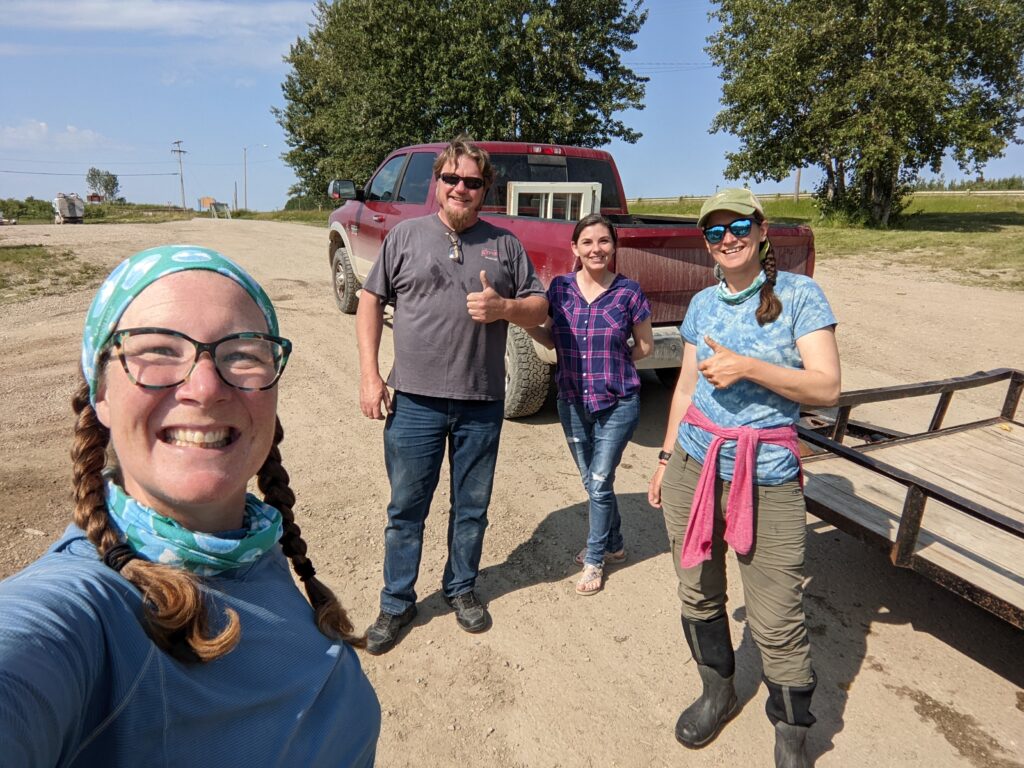
My impression was that these folks are no strangers to the cataclysmic power and rhythms of Nature. In fact, keeping their heads about them through such events seemed a grounding point of identity and essential survival outlook. With much of the world absorbed in trauma mongering, up here folks survive, shrug, and rebuild. My admiration for those who make their lives at the higher degrees of latitude only grows.
We were amused to find ourselves kicking off a final stage of a private race series which we call “the slowest race no one else knows they are in.” Our unwitting competitors this time were the Canadian Coast Guard boats, tasked to put up the buoys to mark the channels, without which, the barges cannot proceed. So the game was: Who will get to the Arctic Ocean first, The Buoys or Her Odyssey? No spoilers but it was neck and neck all the way through.
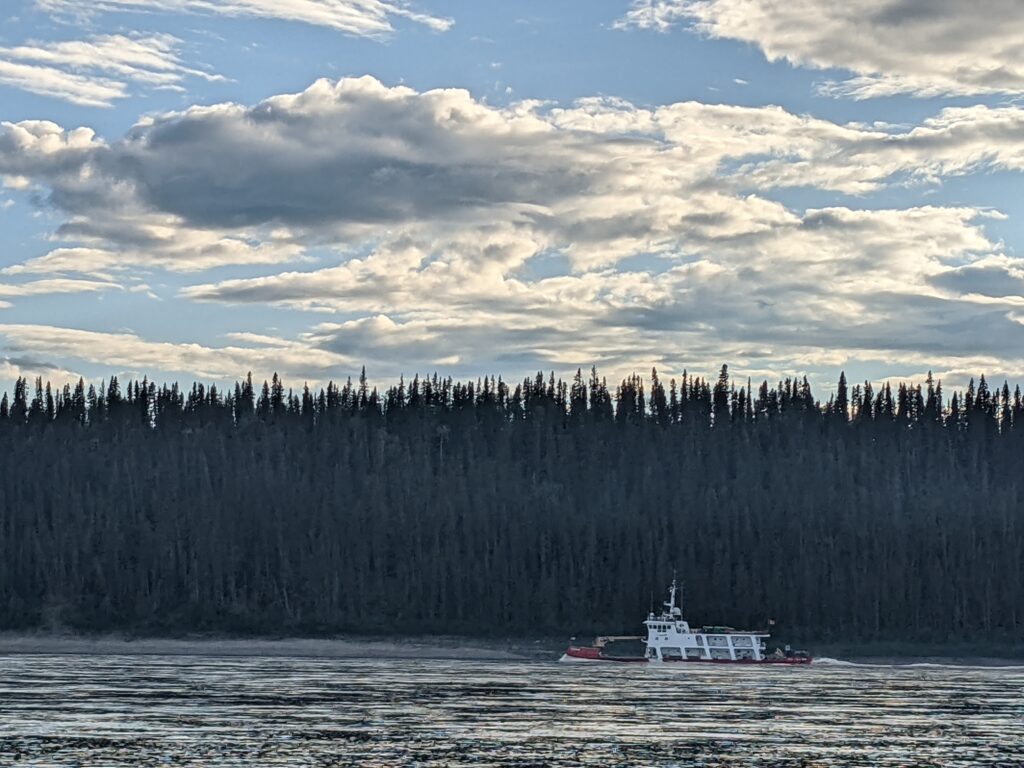
We would meet one other canoeing duo further down the river and heard tell of at least 10 others who had come to paddle the historic route (or any of a number of adventurous alternates) in the summer of 2022.
Fortunately for future potential paddlers, a couple great new resources are available in the form of a detailed set of 6 maps by Go Trekker (our followers may recognize some of the cover pictures) and (rumor on the river is) an update to the Mackenzie River Guidebook! (Big thanks to Clara Hughes for hooking us up with our copy)
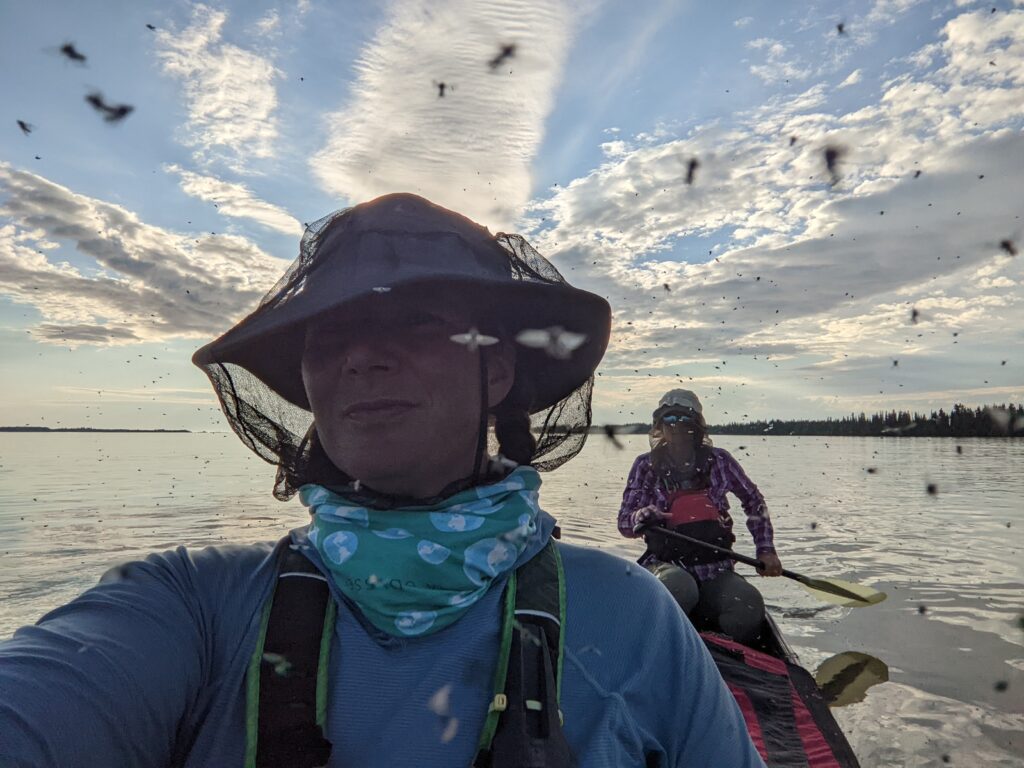
An overall impression from the Big River is an experience of scale. If you’ve ever traveled on glaciers, across open ocean out of sight of land, or been lost in a desert, you know the sensation. I was awed to move through a landscape so vast it swallows its own features. In the 6 weeks we spent on this river, days passed skirting the likes of the MacKay Range and Carcajou Ridge, while others, like the Mackenzies, peeked across enough distance that my mind couldn’t fathom, instead fashioning them laughably small.
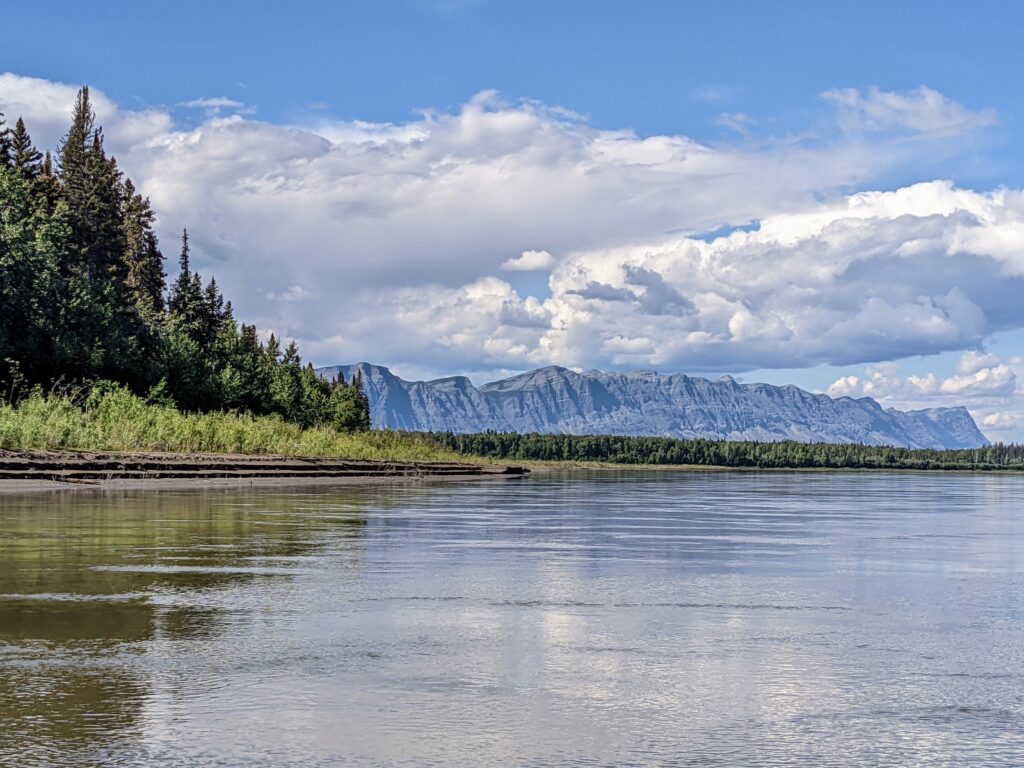
The Big River was wide water (sometimes more than 3 km in breadth), a few lakes with lots of dead water and birdlife. We encountered frequent sandy islands which we came to refer to as:
“innies”- sandbar just below the surface
“Outies”- sandbars emerging just above the water surface
While the water level on the Athabasca and Slave Rivers could fluctuate significantly in the course of a day or overnight, the Big River seemed more steady and we were able to camp closer to the banks.
Forest fires continued to be a frequent neighbor and while we kept an eye and ear on them, their being a natural part of the timelessness of the Boreal and our being on a massive body of water, we were not overly alarmed. A few times we camped in the wake of fire crews or had to cross to the far riverside to make camp because they’d burnt down to the water edge. The most notable struggle was encountering days of poor air quality, burning eyes and rasping lungs. We exchanged report with folks in the communities about the fires and moose sightings.
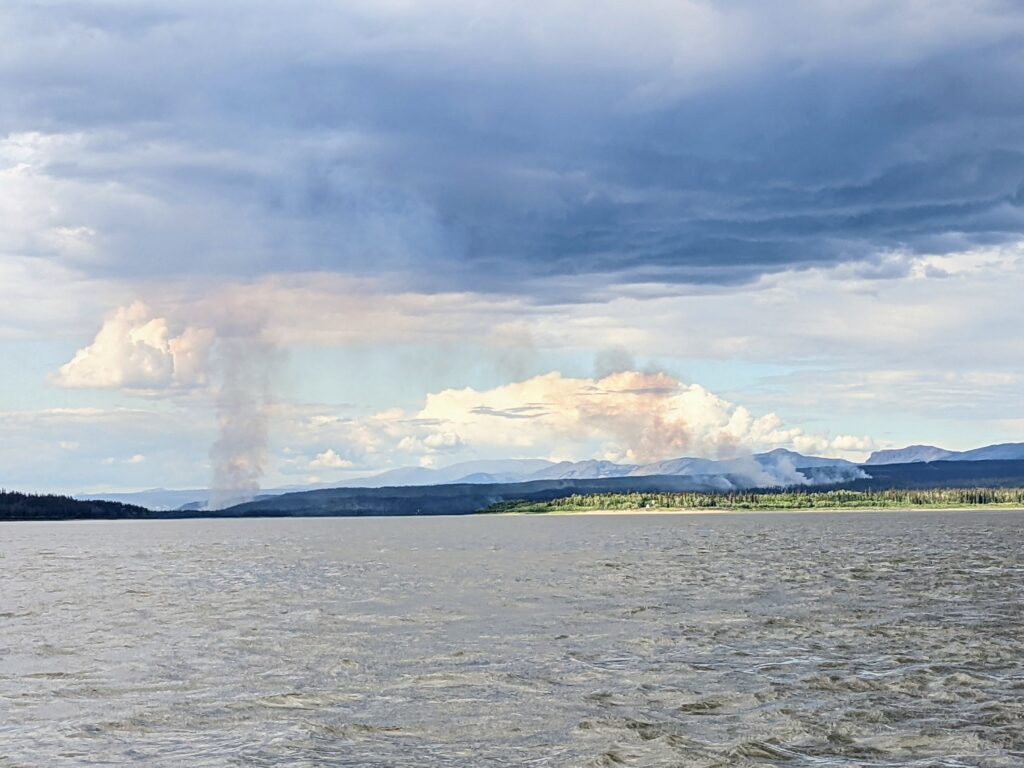
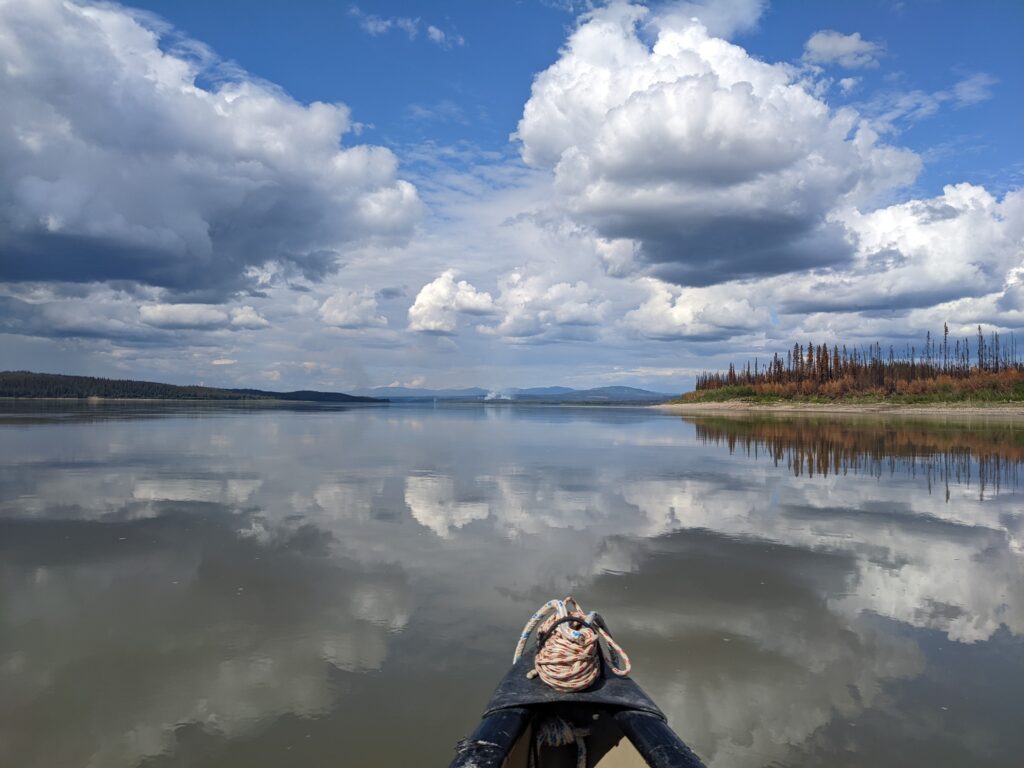
We passed riverfront communities at least once a week and cabins or hunting camps almost daily. There was always cell phone reception around the towns. The easiest places to make camp were at hunting camps or cabins along the river. We would always check if anyone was around to ask permission, did our best to respect the camps (waste disposal is an important matter to tend responsibly) and where we could, leave them a little better. I liked to leave notes of thanks and praise and sign them with our information so that if they had concerns or were stepping out of bounds, we’d have a chance to hear that feedback.
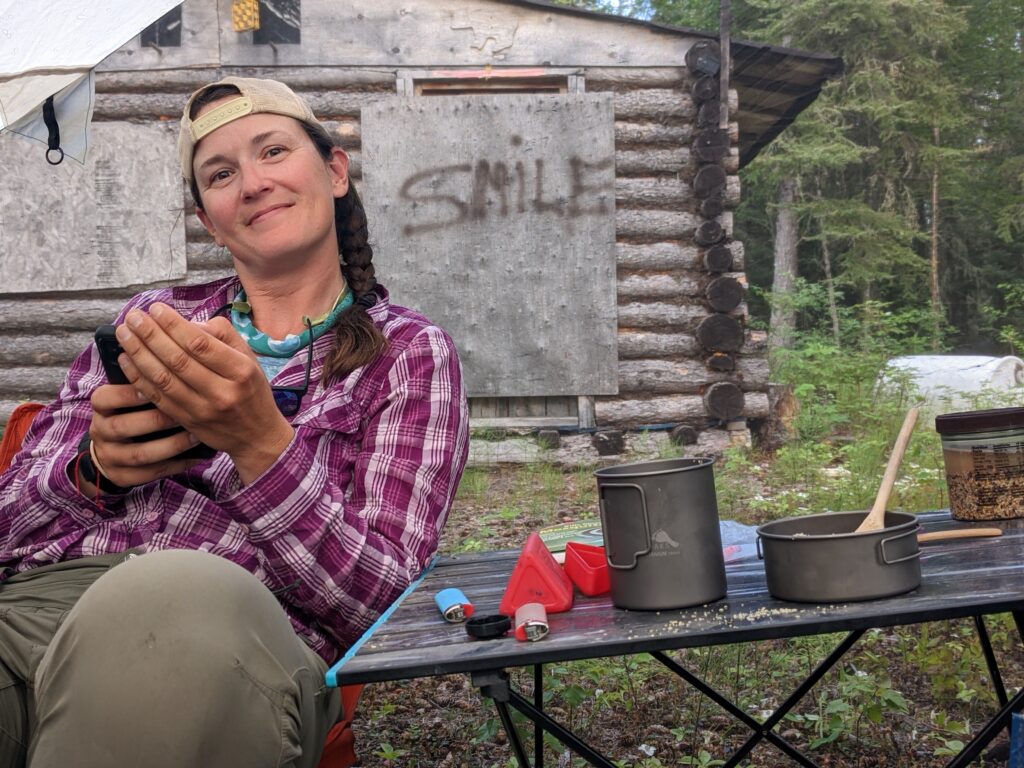
Paddling into the mouth of the Big River from the Great Slave Lake, legends tell of giant beavers building lodges which have since become eyots. I wished we’d had more time to explore them but even so we had been in the boat 8 hours straight across the shallow, reedy northern shore of Beaver Lake, watching the leeches, terns, pelicans, and ducks.
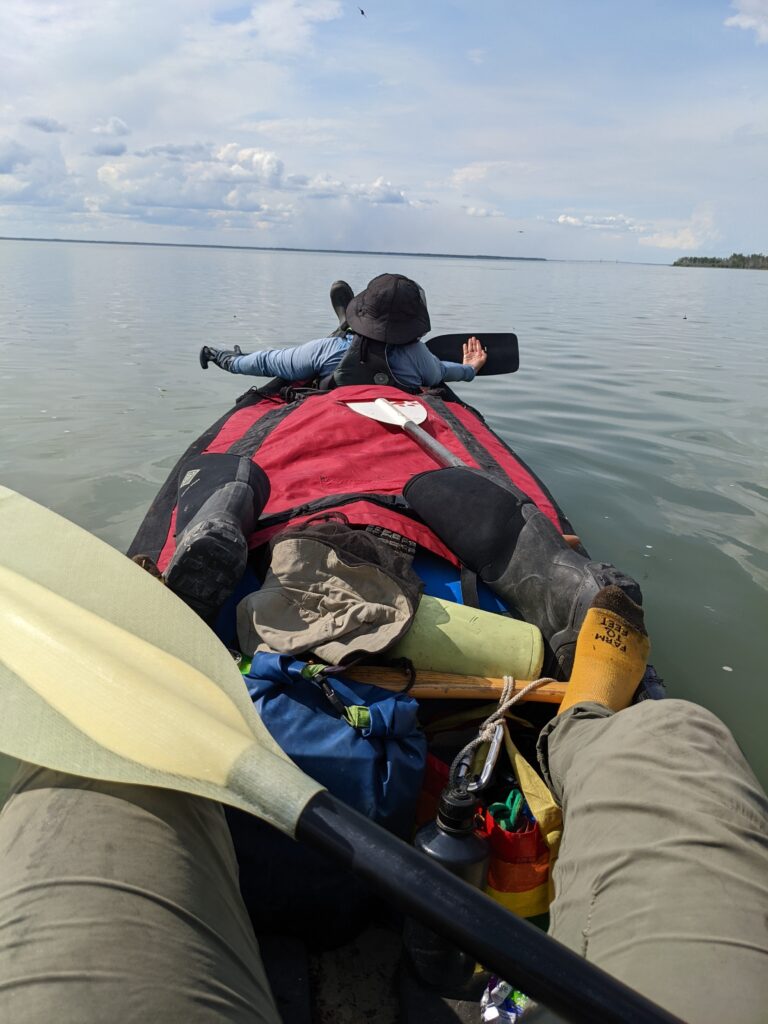
We were anxious to pull over at the first solid ground possible, if just to prove to ourselves it still existed. I mean, you try peeing off the side of a boat or into your bailer all day! We found purchase where the winter road comes down into the river. In the winter, vehicles would just keep going across the ice, in the summer, locals come down here to fish.
And they gut their fish nearby. Which is not something we considered nearly as much as our weariness, hunger, and the building afternoon headwind when we decided to make camp, thinking it would set us up for a morning arrival to Fort Providence.
Bear Encounter
“The best thing people can do for bears is replace misconceptions with facts.” – Dr. Lynn Rogers
To educate yourself about bear etiquette, I encourage you to dispel myths in your mind. What follows is my account of one interaction out of several dozen over years and across species. The events are situational, based on experience, and flawed perception. For some context: I’ve shared terrain with around 50 bears (mostly black, some brown and grizz), only having walked and directly communicated with a few of these. Of those species I’ve met, they aren’t out looking for violence.
Bears are not nearly the antagonists we paint them out to be. Rather, it is my summation that we project our own propensity for violence on them. That said, they are far from tame and I often quail or rage at videos online of people chasing and recording them, lining roadsides bumper to bumper with our vehicles to snap pictures thus blocking the bears from being able to cross what is already a tarmac death river for many of them.
More often than not when I hear the term “problem bear” I know this stems from People Problems (our waste disposal practices, habitat encroachment, baiting, lust to capture wilderness moments, lack of education and exposure, self-centeredness, etc), but it always easier to look at the speck of dust in the other’s eyes. Especially when those eyes are above 42 formidable teeth.
The grizzlies I met along the Rockies subsisted mostly on grubs and root balls (around 70% of a brown bear’s diet are foods other than meat). Meat from a kill is a huge boon and can be the difference between their surviving a winter, which is why they will defend a carcass, even hiding and storing the meat to munch on for days.
I contribute the following details to our collective understanding of interactions between our species but if this has stressed you out already, feel free to skip the rest of this post.
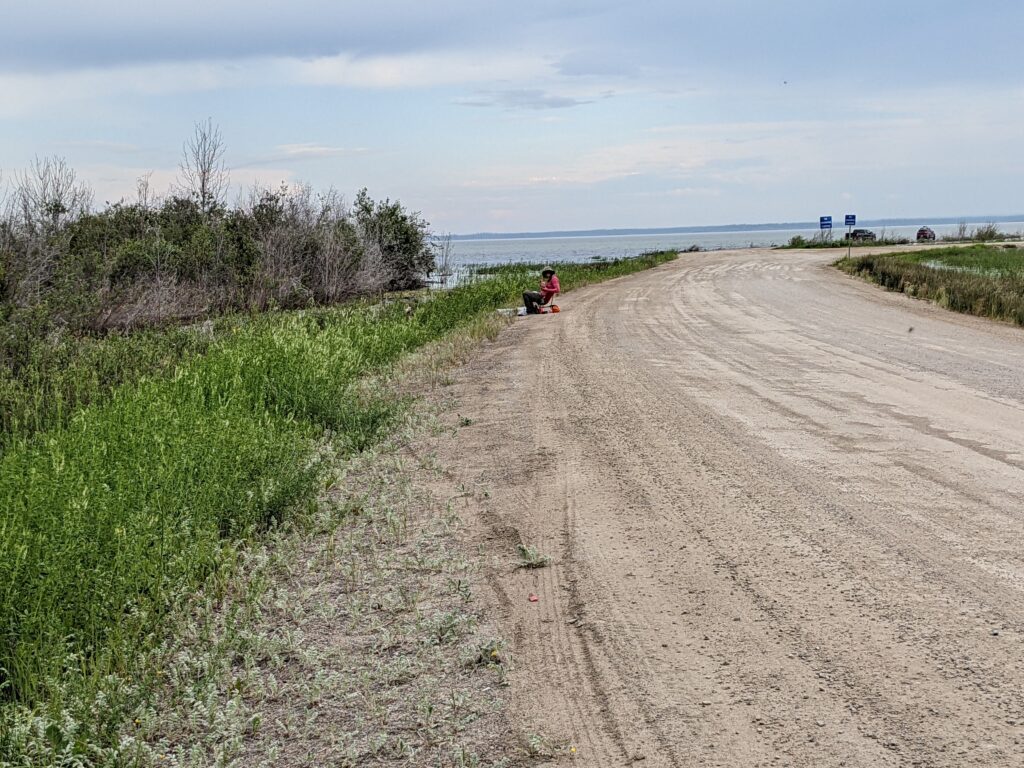
While we were cooking dinner down by the boat and gear, a long legged black bear came shambling up the road. We had one can of bear spray with us and the other was up in the tent. We stood up, and made it clear they were not welcome to join us for dinner. It was in the back of my mind that we were blocking its usual route but after some deliberation at a good distance, it turned off and disappeared onto a little bush trail and we went back to cooking.
As we ate, we heard a tearing sound from up in the direction of camp, 600 m away. We tried to convince ourselves it wasn’t what it was, because we were tired and hungry. By the time we had locked down the cooking area and made it up there, the bear was swaying against our tent, having slashed some exploratory rips in the fly. We approached at a steady pace, staying close together, making ourselves large and loud.
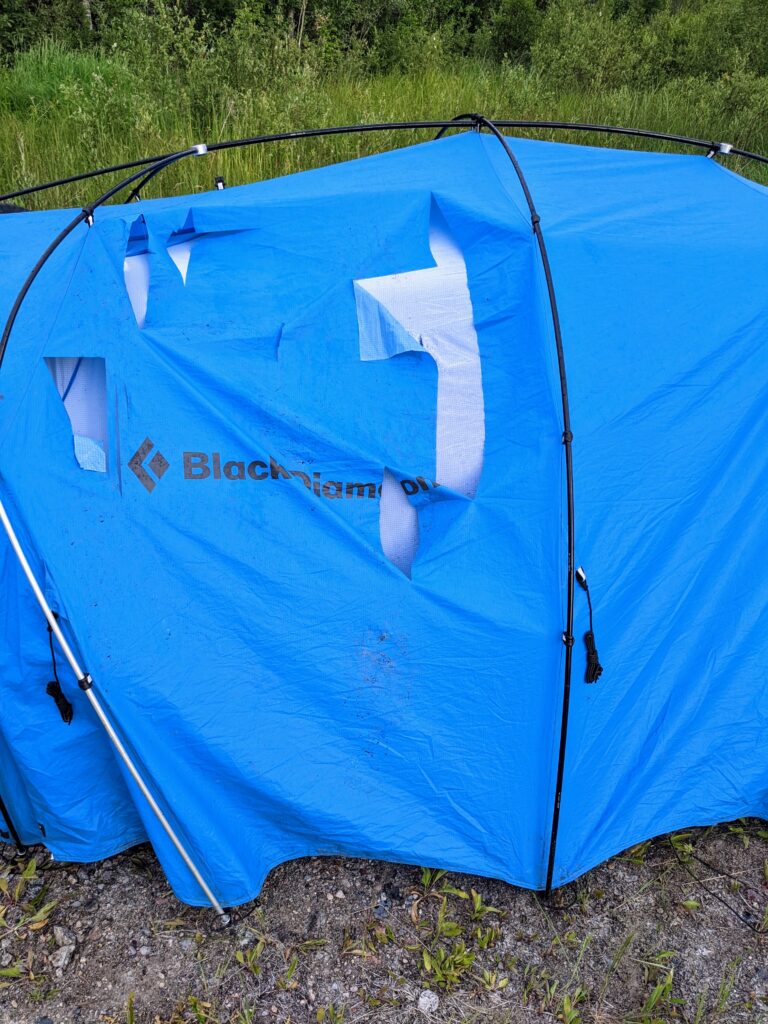
The bear scampered off into the woods and we assessed the damage. While we were inside the tent, the bear returned. We watched through the vestibule and discussed what to do as it circled the tent. I got out on the far side with the bear spray and employed the communication methods I had learned from Chris and Reno (bear-wise bushmen I met in Canada), gruffly coughing and grumbling. Its ears remained up and it plopped into the seated position with a huff.
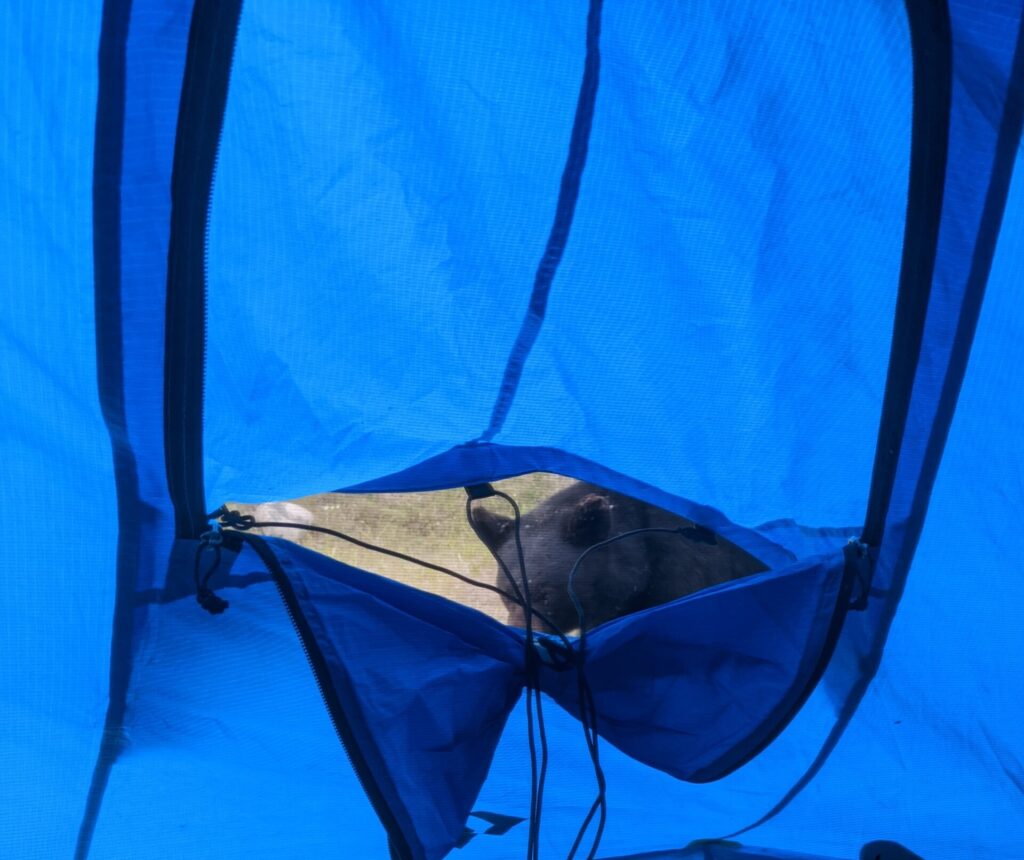
Having identified this as a scavenger black bear accustomed to humans, I stood my ground but gave it the space to back off (reading an animal’s pressure points is something I learned from moving cattle and working with sled dogs.) It did get to moving but when it paused at the edge of the bush, like a dog testing how long you’ll hold the door, I took advantage of the high ground of a hill and stalked after it, urging it the rest of the way out of the vicinity. We slept restless and with our bear sprays near at hand.
Once we broke camp in the morning and went down to the gear, we found the boat and our food barrels had been flipped into the stagnant water mingled with Brown Town (the area around human used sites where folks go to lay waste and plant Toilet-paper flowers).
Wading after our stuff, we were glad that most of our smellables were secured in the barrels and electronics were in water-tight cases, the only missing pieces were a pantry bag and a few other loose goods. Once we’d fished most of it out from among the trash and scum, I went ducking into the network of bear tunnels through the bush in the bog and soon recovered the pantry bag.
In the end, the scamp had made away with a spare lunch bag containing a kilo of yerba mate, an emergency Mountain House Chili Mac meal, and a container of caffeinated Mio. I imagined the critter having an absolute caffeine buzz, then the crash and…well, the consequences of eating a whole Mountain House Chili Mac, dry.

We debriefed on the encounter once we had rested and composed ourselves. Doing it over milkshakes at the lone eatery in Fort Providence didn’t hurt. I tried calling several agencies (RMCP and Parks Canada) to notify local authorities but they kept passing me to some far away headquarters where no one answered.
While we had hoped to pass Fort Providence by, there wasn’t enough Tenacious Tape on board to sort it on the go. We instead spent 3 days stitching up the tent, impregnating thread with chapstick, and experimenting with different epoxy combinations to see if we could get anything to stick to the silnylon fly (we couldn’t. They all slipped).
We ended up duct taping the stitching shut and relying on the extra tarp Carcajou Keith had advised we carry to set up over top of our tent. Coming from further south, we’d thought this a silly redundancy but had quickly come to appreciate that, at these latitudes, weather is a different matter altogether and redundancy isn’t waste, it is security. Very different thinking from our ultralite thru-hiking backgrounds.
All reaffirming the lesson that when you go traipsing into far off realms, it serves to honor and learn from the ways the locals do it. Otherwise, don’t worry, you’ll learn the hard way.
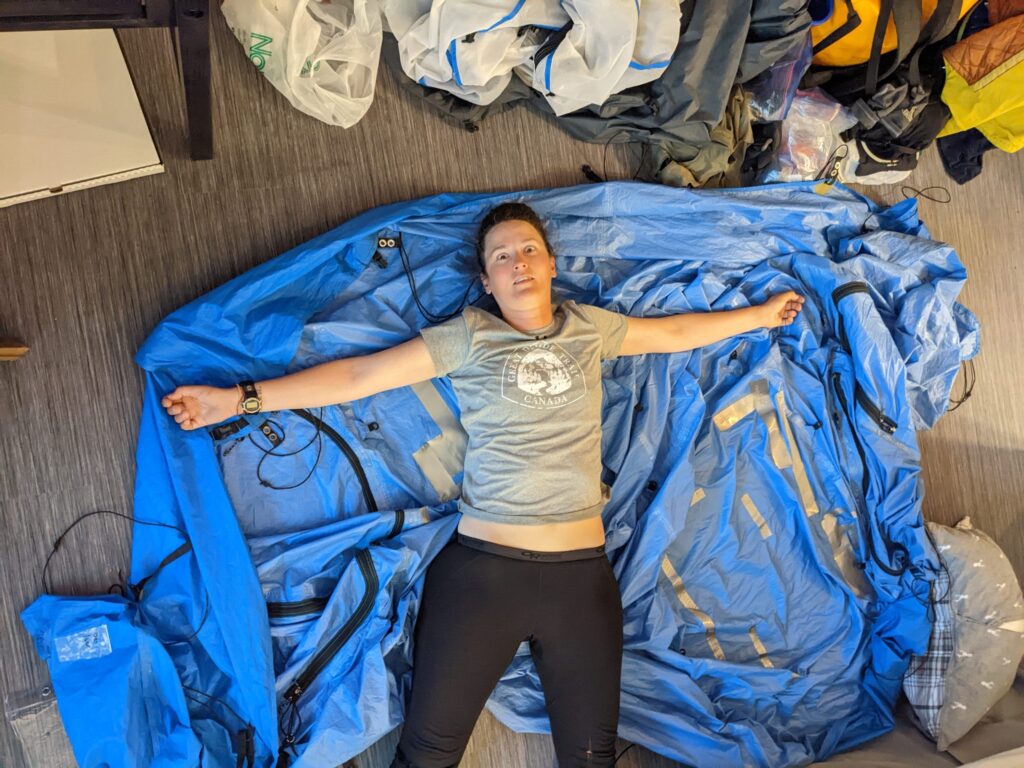






Comments (5)
You two continue to amaze!! Incredible! Have fun, be safe!
Thank you!!! ?
Hi ,
Loved your Big River Article .
The Canadian Arctic , one’s mind anger lost in its huge size , an all encompassing vastness of space , it seems there’s no end to the quite beauty of it all, as we slowly drift along its banks .
Hid to laugh, do I struggle and self argue to paddle back to shore EVERY couple hours just to PEE ? . To hell with the full bladder agony , peeing in the boat seems to be the best solution, for same time and so annoying scratching mozzy bite itches after peeing .. ??.
Wild bears and all wildlife out there is so exciting and thrilling to see , seems like the only problems are the bears who’ve tasted man’s leftovers and garbage sites ,
I was awakened at 2am on time in Amiskwi River , Bear wanted to visit , his whole head poked in my tent that woke me .. seems to be there ARE Angels watch over us .
Enjoyed your fireside read here as I sit by my wood stove ,
Happy Trails
LANI
What a great write up. Thoroughly enjoyed this.
Thank you! It was funny to notice how hard it was for me to hit publish on this one, so your affirmation helps a lot.